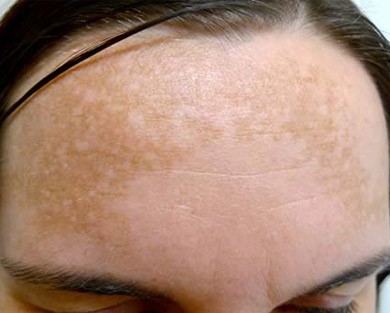
21 Jan How do I get rid of brown patches on my face?
Hyperpigmentation isn’t necessarily a condition but more a term that describes skin that appears darker. It can either occur in small patches, cover large areas or affect the entire body. Whilst increased pigmentation usually isn’t harmful, it can be very distressing if you suffer with it.
Types of hyperpigmentation
There are several types of hyperpigmentation, the common ones being melasma, sunspots, and post-inflammatory hyperpigmentation.
- Melasma; this believed to be caused by hormonal changes and may develop during pregnancy or with use of the contraceptive pill. Areas of hyperpigmentation can appear on any area of the body but are most commonly seen on the face and are often symmetrical.
- Sunspots; all so called liver spots, age spots or solar lentigines, sunspots are common. They’re related to excess sun exposure over time. Generally, they appear as spots on areas exposed to the sun, like the hands and face.
- Post-inflammatory hyperpigmentation; this is a result of injury or inflammation to the skin. A common cause of this type is acne.
What causes hyperpigmentation?
A common cause of hyperpigmentation is an excess production of melanin. Melanin is a pigment that gives skin its colour. It’s produced by skin cells called melanocytes. The hyperpigmentation is a direct result of an increased level of a hormone in your body that results in increased melanin synthesis.
Several different conditions or factors can alter the production of melanin in your body.
- Excessive sun exposure causes an increase in melanin.
- Certain medications can cause hyperpigmentation. Also, some chemotherapy drugs can cause hyperpigmentation as a side effect. This is called Melasma.
- Pregnancy changes hormone levels and can affect melanin production in some women – this is also called Melasma
- A rare endocrine disease called Addison’s disease can produce hyperpigmentation that’s most obvious in areas of sun exposure, such as the face, neck, and hands.
The biggest risk factors however for general hyperpigmentation are sun exposure and inflammation.
How can I treat my hyperpigmentation?
A skin specialist in clinic will take a full medical history to try and understand the cause of your hyperpigmentation. It can be a challenging problem to treat due to complexity of the melanin production pathway (the chain of events involved in its creation) and treatment times can be lengthy – sometimes years!
The first step is strict sun avoidance and high-level SPF DAILY! Secondly the use of topical agents such as those found in our AlumierMD anti-pigmentation products, combined with procedures to; increase cell clearance and turnover, remove hyper-pigmented cells and to stimulate new skin cell production with normalised melanin production.
AlumierMD topical ingredients target different stages of how melanin is formed to prevent or reduce it from being made in the first place and include;
- Daily use of Alumier high-level, broad spectrum UVA/UVB SPF
- Anti-oxidants; Vitamins A, C,E, SOD, Glutathione
- Retinol (Vitamin A)
- Melansome transfer inhibitors; Niacinamide
- Tyrosinase inhibitors; Kojic acid, azelaic acid, arbutin, glycolic acid, hydroquinone, liquorice, mulberry
- L-DOPA inhibitor; Albatin
- Transcriptional blockers; Soybean
- Melanin stimulating hormone blockers; Cytochalasin B
Put more simply this means using SPF 30 or above everyday – you’ll need to be religious with this! Added to that a targeted skincare regime that you stick to long-term including a Vitamin C serum in the morning and a Retinol serum at night.
Procedures include things like chemical peels, laser skin resurfacing with Moxi laser – fantastic new option available for all type of pigmentation in all skin colours! All of these will require you to commit to a course and each comes with different pros and cons such as the downtime required.
Topical prescription medication can treat some cases of hyperpigmentation. This medication usually contains hydroquinone, which lightens the skin. However, prolonged use of topical hydroquinone (without any breaks in use) can also cause darkening of the skin, known as ochronosis. So, it’s best to use topical hydroquinone only under the care of a dermatologist so that they can properly guide you on how to use the medication without any adverse effects.
What’s the outlook for hyperpigmentation?
Hyperpigmentation isn’t generally harmful and usually isn’t a sign of a serious medical condition. In some cases, dark areas will fade on their own with good sun protection. In other cases, more aggressive treatment is needed. There’s no guarantee that the dark spots will fade completely, even with treatment.


Sorry, the comment form is closed at this time.